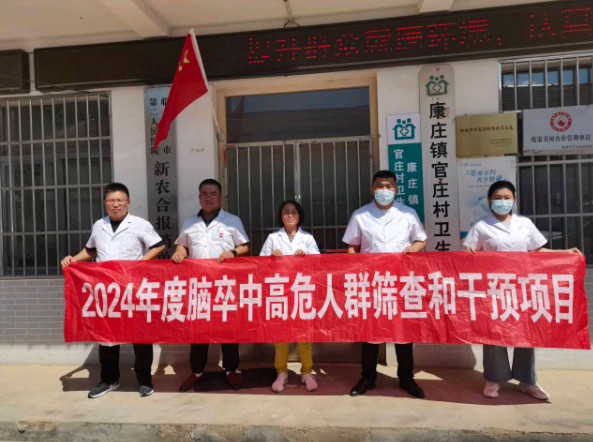- Date:2024-08-28
- Click:650Times
In order to actively respond to the call of the national "Healthy China Action (2019-2030)" and "Healthy China Action - Cardiovascular and Cerebrovascular Disease Prevention and Control Action Implementation Plan (2023-2030)", we comprehensively promote the implementation of the screening and intervention project for high-risk groups of people with stroke in the year 2024. Since our hospital held an out-of-hospital kick-off meeting of the Screening and Intervention Project for People at High Risk of Stroke in Daxinzhuang Service Centre on June 3, 2024, the screening and intervention project for people at high risk of stroke screened in two townships, Daxinzhuang and Kangzhuang, was carried out from August 26 to 28, and the project included cervical ultrasound, medication administration by neurological specialists, and guidance on health management, etc., aiming at the timely detection and intervention of high-risk factors of stroke through the screening, to It aims to reduce the incidence of stroke in rural areas and improve the health literacy level of the public. In the early stage of the project, the screening sites provide free stroke risk assessment and screening services for local people, covering various aspects such as lifestyle, family history, disease history, etc., as well as combining blood pressure, blood glucose, blood lipids and other laboratory tests to accurately identify high-risk groups. In the later stage, the Cranial Ultrasound Department, Neurosurgery Department and other related departments of the hospital will intervene in the screened high-risk groups.

The screening time was three days, with a total of 174 people screened, and all the high-risk groups of stroke were included in the scope of health management. The screening activities of this project not only improved rural residents' awareness of stroke and their ability to prevent and treat stroke, but also promoted the improvement of stroke prevention and treatment level in primary medical institutions, laying a solid foundation for building a whole-population, all-round, full-cycle health service system.



 鲁ICP备11009722号-4
鲁ICP备11009722号-4 